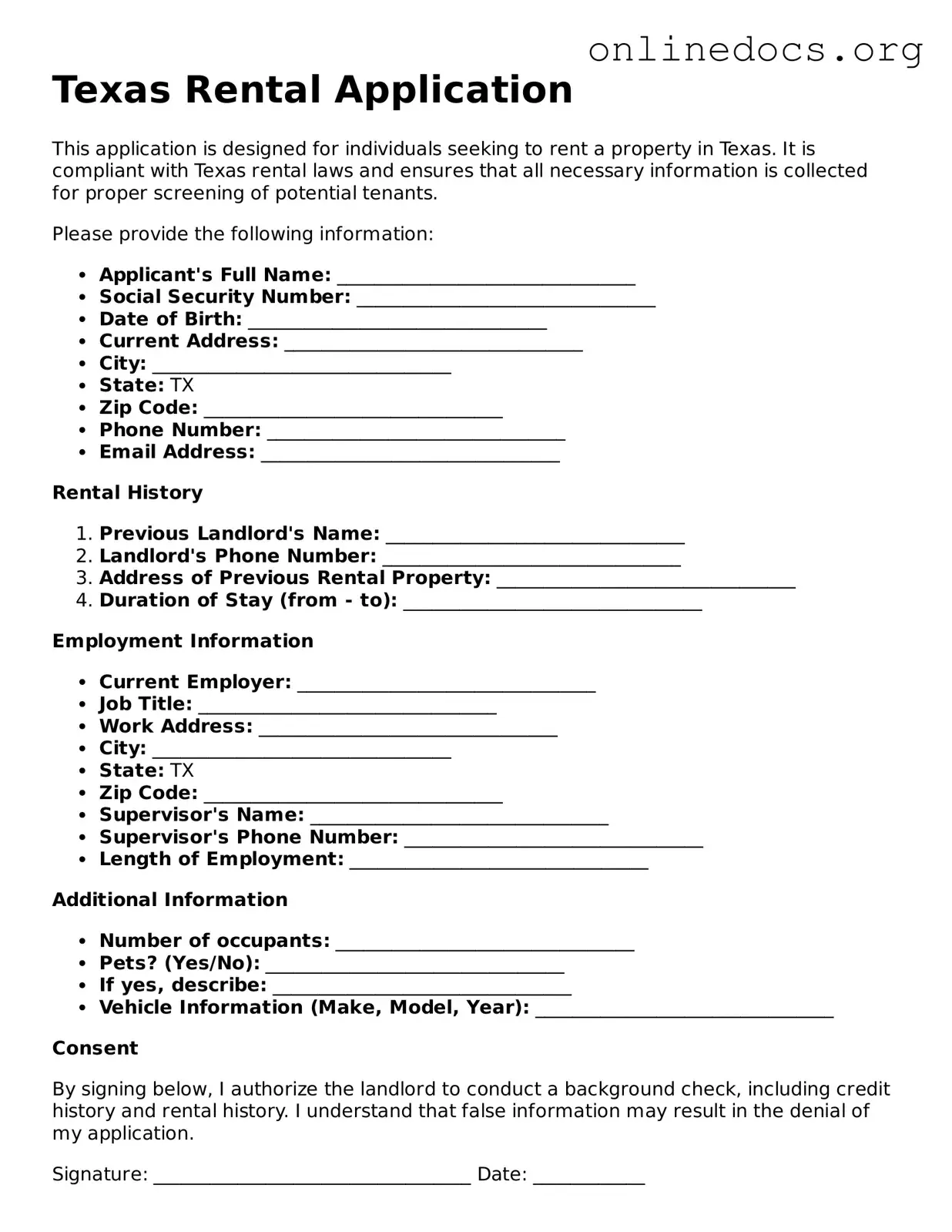The Texas Rental Application form is similar to the standard lease agreement. Both documents require detailed personal information from the applicant, including their employment history, income, and rental history. They serve to establish a legal relationship between the landlord and tenant. While the rental application is focused on the tenant’s qualifications, the lease agreement outlines the terms and conditions of the tenancy, including rent amount, duration, and responsibilities of both parties.
Another document that resembles the Texas Rental Application is the tenant screening form. This form is often used by landlords to gather information about potential tenants before they approve a rental application. Like the rental application, it collects personal details, such as credit history and references. The main difference lies in the tenant screening form's focus on background checks, which help landlords assess the risk associated with a potential tenant.
The rental reference form also shares similarities with the Texas Rental Application. This document is typically filled out by previous landlords or property managers to provide insight into a tenant’s rental history. It may include information about the tenant’s payment history, behavior, and overall reliability. Both forms aim to evaluate the tenant’s suitability, but the rental reference form relies on third-party opinions rather than self-reported information.
In the context of renting properties in California, it's essential to understand that various forms play a significant role in the process, including the rental application and the employment verification form. The latter is particularly important, as it ensures that prospective tenants can provide proof of stable employment to assure landlords of their ability to pay rent. For further details on employment verification, you can visit legalformspdf.com, which offers valuable resources for understanding these essential documents.
The employment verification form is another document that aligns with the Texas Rental Application. This form is used to confirm a tenant's employment status and income level. It typically requires the tenant's employer to provide information about their job title, salary, and length of employment. Like the rental application, it serves to verify the tenant's ability to pay rent, ensuring landlords make informed decisions.
Lastly, the credit application is similar to the Texas Rental Application in that it seeks to assess a tenant's financial responsibility. This document often requests permission to run a credit check and may ask for personal financial information. Both forms aim to determine whether a potential tenant is likely to fulfill their financial obligations. However, the credit application specifically focuses on the tenant's creditworthiness, while the rental application encompasses a broader range of personal and rental history information.
